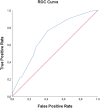Intermittent inotropic support with levosimendan in advanced heart failure as destination therapy: The LEVO-D registry
- PMID: 36655614
- PMCID: PMC10053278
- DOI: 10.1002/ehf2.14278
Intermittent inotropic support with levosimendan in advanced heart failure as destination therapy: The LEVO-D registry
Abstract
Aim: Patients with advanced heart failure (AHF) who are not candidates to advanced therapies have poor prognosis. Some trials have shown that intermittent levosimendan can reduce HF hospitalizations in AHF in the short term. In this real-life registry, we describe the patterns of use, safety and factors related to the response to intermittent levosimendan infusions in AHF patients not candidates to advanced therapies.
Methods and results: Multicentre retrospective study of patients diagnosed with advanced heart failure, not HT or LVAD candidates. Patients needed to be on the optimal medical therapy according to their treating physician. Patients with de novo heart failure or who underwent any procedure that could improve prognosis were not included in the registry. Four hundred three patients were included; 77.9% needed at least one admission the year before levosimendan was first administered because of heart failure. Death rate at 1 year was 26.8% and median survival was 24.7 [95% CI: 20.4-26.9] months, and 43.7% of patients fulfilled the criteria for being considered a responder lo levosimendan (no death, heart failure admission or unplanned HF visit at 1 year after first levosimendan administration). Compared with the year before there was a significant reduction in HF admissions (38.7% vs. 77.9%; P < 0.0001), unplanned HF visits (22.7% vs. 43.7%; P < 0.0001) or the combined event including deaths (56.3% vs. 81.4%; P < 0.0001) during the year after. We created a score that helps predicting the responder status at 1 year after levosimendan, resulting in a score summatory of five variables: TEER (+2), treatment with beta-blockers (+1.5), Haemoglobin >12 g/dL (+1.5), amiodarone use (-1.5) HF visit 1 year before levosimendan (-1.5) and heart rate >70 b.p.m. (-2). Patients with a score less than -1 had a very low probability of response (21.5% free of death or HF event at 1 year) meanwhile those with a score over 1.5 had the better chance of response (68.4% free of death or HF event at 1 year). LEVO-D score performed well in the ROC analysis.
Conclusion: In this large real-life series of AHF patients treated with levosimendan as destination therapy, we show a significant decrease of heart failure events during the year after the first administration. The simple LEVO-D Score could be of help when deciding about futile therapy in this population.
Keywords: Advanced heart failure; Inotropes; Levosimendan; Palliative care.
© 2023 The Authors. ESC Heart Failure published by John Wiley & Sons Ltd on behalf of European Society of Cardiology.
Conflict of interest statement
D.D., J.G.C., J.J.B., and J.F. received speaker fees from Orion.
Figures




References
-
- Rogers JG, Butler J, Lansman SL, Gass A, Portner PM, Pasque MK, Pierson RN 3rd, INTrEPID Investigators . IChronic mechanical circulatory support for inotrope‐dependent heart failure patients who are not transplant candidates: results of the INTrEPID trial. J Am Coll Cardiol. 2007; 50: 741–747. - PubMed
-
- Costanzo MR, Mills RM, Wynne J. Characteristics of ‘stage D’ heart failure: insights from the acute decompensated heart failure National Registry Longitudinal Module (ADHERE LM). Am Heart J. 2008; 155: 339–347. - PubMed
-
- Cuffe MS, Califf RM, Adams KF Jr, Benza R, Bourge R, Colucci WS, Massie BM, O'Connor CM, Pina I, Quigg R, Silver MA, Gheorghiade M, Outcomes of a Prospective Trial of Intravenous Milrinone for Exacerbations of Chronic Heart Failure (OPTIME‐CHF) Investigators . Outcomes of a prospective trial of intravenous Milrinone for exacerbations of chronic heart failure (OPTIME‐CHF) investigators. Short‐term intravenous milrinone for acute exacerbation of chronic heart failure: a randomized controlled trial. JAMA. 2002; 287: 1541–1547. - PubMed
-
- Comín‐Colet J, Manito N, Segovia‐Cubero J, Delgado J, García Pinilla JM, Almenar L, Crespo‐Leiro MG, Sionis A, Blasco T, Pascual‐Figal D, Gonzalez‐Vilchez F, Lambert‐Rodríguez JL, Grau M, Bruguera J. on behalf of the LION‐HEART Study InvestigatorsLION‐HEART study investigators. Efficacy and safety of intermittent intravenous outpatient administration of levosimendan in patients with advanced heart failure: the LION‐HEART multicentre randomised trial. Eur J Heart Fail. 2018; 20: 1128–1136. - PubMed
-
- García‐González MJ, Aldea Perona A, Lara Padron A, Morales Rull JL, Martínez‐Sellés M, Mora Martin M, López Díaz J, López Fernandez S, Ortiz Oficialdegui P, Jiménez Sosa A. Efficacy and safety of intermittent repeated levosimendan infusions in advanced heart failure patients: the LAICA study. ESC Heart Fail. 2021; 8: 4820–4831. - PMC - PubMed
Publication types
MeSH terms
Substances
LinkOut - more resources
Full Text Sources
Medical
Research Materials
Miscellaneous

